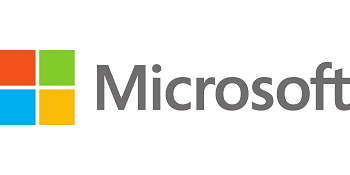Microsoft Windows
Microsoft Windows, first released in 1985 was the first operating system to offer graphical user interface (GUI) for personal computers (PC’s). Windows was developed by Microsoft Corporation and soon after its release it became the most demanded OS in the market.
The versions that followed offered much higher productivity and functionality by offering applications such as Windows explorer (now known as File explorer), print manager, program manager etc that made the operating system more user friendly and organized.
Microsoft Windows comes in 32 and 64 bit versions. The 32 bit version is only capable of accessing 232 different memory addresses which might seem a lot but it equals only to around 4 GB’s of RAM (What this means is that windows 32 can’t handle a RAM greater than 4GB). Whereas the 64 bit version is capable of accessing 264 different memory addresses, which equals to around 18,000,000 TB’s of RAM or 18 quintillion (18 followed by 18 zeros) Bytes, which makes it safe to say we won’t be needing a 128 bit version anytime soon.
The Windows Timeline
The First version was, as stated above, was released in 1985 and was the first Operating system to offer GUI to its users.
The release of Windows 95 (released in 1995) brought with it internet support in the form of Internet explorer (now known as Microsoft Edge) which made accessibility to the internet way easier.
In 2001, Microsoft released Windows XP, which replaced the Windows 95 Kernel for a much stronger code base and better memory and application management along with an upgraded user interface.
Following the successful response from consumers regarding Windows XP, Microsoft introduced Windows Vista in 2006, however Vista didn’t receive as warm a welcome as XP did, primarily due to complaints regarding Vista being a hog when it came to resource consumption and it being slow.
Following the disappointing welcome of Windows Vista, Microsoft introduced Windows 7 in 2009, which shared Vista’s interface, but overcame the speed issues and lowered the system requirements.
Windows 8 came out in 2012, which offered users the ability to synchronize their settings so that users could enjoy their personalized settings if they logged in from another device (that ran Windows 8).
In 2015, Microsoft rolled out Windows 10, whose most notable feature was the digital personal assistant Cortana, similar to that of Apple’s Siri and the veteran web browser, Internet explorer, was put to rest and replaced by Microsoft Edge.
October 5, 2021 marked the release of Windows 11, whose most notable changes and features include, repositioning of the start button from the bottom left to center along with skin changes for nearly all icons and chats from Microsoft teams being integrated into the taskbar.
Nowadays, unfortunately, Windows isn’t the most common operating system out there, the spot for the most common OS is shared by three operating systems, Windows, Apple’s MacOS and Linux.
Throughout Windows journey, Microsoft released a plethora of softwares, aimed to ease and assist the end user. The softwares include but aren’t limited to:
- Microsoft Word
- Microsoft Access
- Microsoft Excel
- Microsoft Powerpoint
- Microsoft OneNote
- Microsoft Publisher
- Microsoft Outlook and many more.
Windows Server
The aforementioned versions are client versions of Windows, Microsoft has also released a number of server versions for Windows, which are used to support enterprise level data storage, management, communications etc. The server versions are as follow:
- Microsoft NT 3.1
- Microsoft NT 3.5
- Microsoft NT 3.51
- Microsoft NT 4.0
- Microsoft server 2000
- Microsoft server 2003
- Microsoft server 2008
- Microsoft server 2012
- Microsoft server 2016
- Microsoft server 2019
- Microsoft server 2022

